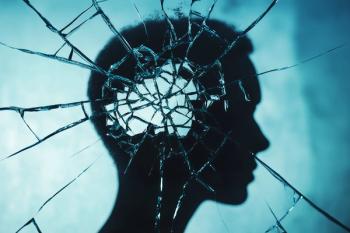
How the World Wars Affected Modern Neuropsychopharmacology
The war experiences of physicians and scientists shaped their research agendas.
In the years after World War II, there were no effective medicines for schizophrenia, bipolar disorder, or major depression. There were not even names for such things. The word antipsychotic was first used at a medical meeting in 1956, antidepressant was coined in 1952, and tranquilizer in 1953, but their acceptance was slow. Yet within the next 2 decades, all these types of medicines were developed. Most of drug discoveries occurred inadvertently, often with a chance observation by a physician or scientist who was looking for something else.
Many of the key figures in modern psychopharmacology were caught up in World War II in one way or another.1 Some like
Others crucial to the development of psychopharmacology were affected by the war in various ways.
Still others lived through earlier wars. William A. Hammond, MD, who made observations with lithium in bipolar disorder in the 1870s, was Surgeon General of the Union Army during the American Civil War.1 Hans Berger, MD, served in the German cavalry in 1892 and was almost killed in a riding accident. His resulting curiosity about the workings of the nervous system led to the discovery of human electroencephalography. His story continued to include suffering at the hands of the Nazis, who took over his university in the 1930s. Constantin von Economo, MD, the Austrian psychiatrist and neurologist who described encephalitis lethargica and the role of hypothalamic structures in sleep and waking, was
Aside from psychopharmacology, the broader field of neuroscience also developed in the post-World War II years. Its founders also had pivotal experiences during wartime. Otto Loewi, PhD, whose experiments confirmed chemical transmission across synapses, was imprisoned by the Gestapo on the night of the German invasion of Austria. He was stripped of all his possessions, but was later allowed to emigrate on the condition that he transfer the funds from his Nobel Prize to a
The remarkable thing about these stories is the variability of these experiences. Sometimes the war represented more of a hiatus in ongoing research, which was later resumed. In other cases, it led to displacement or imprisonment. Sometimes the result was devastating and culminated in suicide, while in other cases it was a stimulus leading to advances in research. It is a good reminder that, sadly, war is intimately involved in the human condition, and more specifically, that in order to understand the blossoming of neuroscience and psychopharmacology in the 1950s and 1960s, it is useful to take into account the wartime experiences of the founders.
Dr Mendelson is a professor of psychiatry and clinical pharmacology (ret) at the University of Chicago. His recent books include
References
1. Mendelson, WB. The Curious History of Medicines in Psychiatry. Pythagoras Press; 2020.
2. Mendelson, WB. Molecules, Madness and Malaria: How Victorian Fabric Dyes Evolved into Modern Medicines for Mental Illness and Infectious Disease. Pythagoras Press; 2020.
3. Mendelson, WB. Trial by Fire: World War II and the Founders of Modern Neuroscience and Psychopharmacology. Pythagoras Press; 2021.
4. Hodgkin A. Chance and Design: Reminiscences of Science in Peace and War. Cambridge University Press; 1992.
Newsletter
Receive trusted psychiatric news, expert analysis, and clinical insights — subscribe today to support your practice and your patients.













